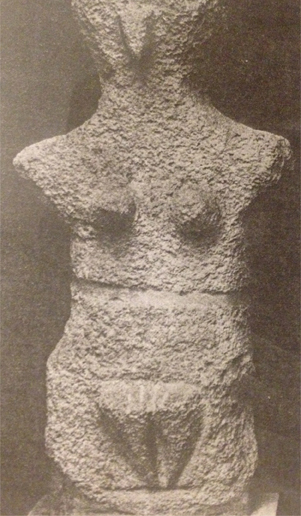| Anonymous Female figure, Cycladic civilization Approx. 2.700 BC British Museum, Great Britain |
|
Rights (Photo / Work):
British Museum List of sources: Devereux Georges; Baubo, Die mythische Vulva;
Frankfurt am Main, 1981;
S. 76 / Syndikat Verlag
|
The Cyclades are an archipelago in the Aegean Sea. According to researchers, this region represents an early form of advanced civilization, also called „Cycladic civilization"[1]. Several figures were found from this time, among others this female representation[2]. Their similarity with other Neolithic equivalents of the Central European region is striking since they are missing head, arm and legs. The torso is reduced to the main female sexual characteristics: while the breasts are small, the vulva is carved all the more concisely and relief-like from the stone. The notch representing the pudental cleft is blatantly obvious. The interpretation that the vulva was of central importance for humans and woman was considered to be the life-giving force seems very likely. However, what's new is the visual splitting of upper and lower body by means of the smooth shaping of a ribbon which was meant to emphasize the waist. Although the Neolithic figures are similar to those of the early Cycladic civilization, they are different in their creative implementation. (Translation: C. Wilhelm) |


